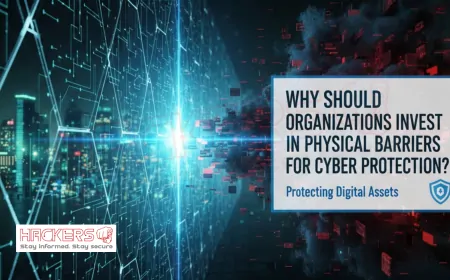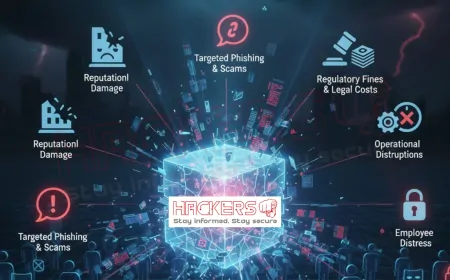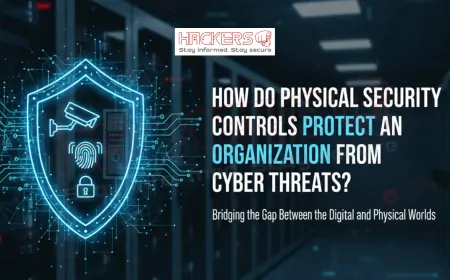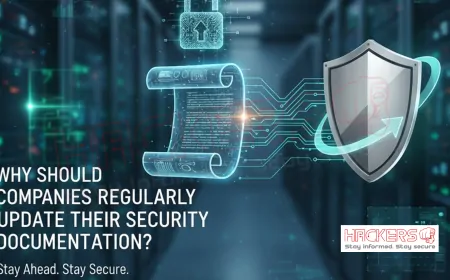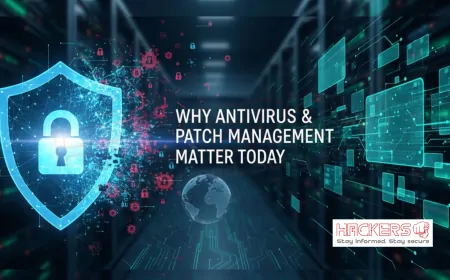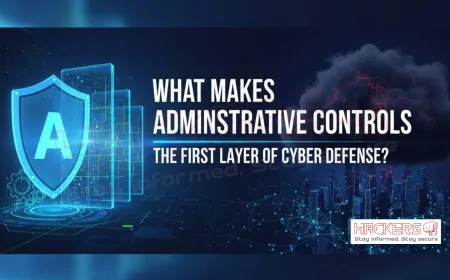How Countries Create Cybercrime Legislation
Picture this: a hacker sitting in a quiet room in one country disables the power grid of a nation thousands of miles away. No soldiers, no weapons, just a laptop and an internet connection. This is the reality of cybercrime today. It moves faster than borders, laws, or even awareness. Governments worldwide are racing to build legal walls in a digital world that has none. But how exactly do countries create cybercrime legislation? It's not just about writing rules; it's about understanding threats, balancing rights, and working across nations. In this blog post, we'll walk through the step-by-step process countries follow to develop laws that fight cybercrime while protecting citizens. Whether you're a student, a business owner, or just curious about the internet's hidden rules, this guide will make the process clear and relatable.

Table of Contents
- Why Cybercrime Legislation Matters
- Step 1: Assessing the Cyber Threat Landscape
- Step 2: Learning from Past Incidents
- Step 3: Studying International Models
- Step 4: Involving Stakeholders
- Step 5: Drafting the Law
- Step 6: Parliamentary Debate and Approval
- Step 7: Implementation and Enforcement
- Step 8: Regular Updates and Amendments
- Examples from Around the World
- Challenges in Creating Cybercrime Laws
- The Role of International Cooperation
- Conclusion
- FAQs
Why Cybercrime Legislation Matters
Cybercrime isn't just about stolen passwords or hacked emails. It threatens economies, national security, and personal safety. A single ransomware attack can shut down hospitals. A data breach can expose millions of citizens' private information. Without clear laws, criminals operate in a gray zone where punishment is uncertain. Cybercrime legislation gives governments the power to investigate, prosecute, and prevent digital crimes. It also sets standards for businesses and individuals, creating a safer online environment for everyone.
More importantly, these laws send a message: cybercrime has consequences. Just like theft or fraud in the physical world, breaking digital trust must come with accountability. But creating such laws is complex. Technology changes daily, and threats evolve even faster. Countries must build flexible, forward-thinking legislation that can adapt without becoming outdated in a year.
Step 1: Assessing the Cyber Threat Landscape
Before writing a single law, countries begin with research. They ask: What kinds of cybercrimes are happening? Who are the victims? Where are the attackers coming from? This step involves gathering data from law enforcement, cybersecurity firms, and international reports.
Governments often form task forces or committees made up of experts in law, technology, and security. These groups analyze trends like phishing scams, ransomware attacks, online fraud, and state-sponsored hacking. They look at both local and global patterns. For example, a country with many online banking users might prioritize financial cybercrime, while a nation with critical infrastructure like dams or power plants may focus on industrial sabotage.
This assessment helps lawmakers understand the scale of the problem. It answers questions like: Are individuals the main targets, or are businesses and government systems at greater risk? The answers shape the focus of the upcoming law.
Step 2: Learning from Past Incidents
History is a powerful teacher. Countries study major cyber incidents, both at home and abroad, to avoid repeating mistakes. For instance, the 2017 WannaCry ransomware attack affected over 200,000 computers in 150 countries, including hospitals in the UK. Many nations used this event to push for stronger laws on software updates and network security.
Local incidents also matter. If a major bank in a country loses millions to a phishing scam, lawmakers take notice. They interview victims, review investigation reports, and identify gaps in existing laws. Was the crime punishable? Could police trace the attacker? Did companies have to report the breach? These real-world cases reveal weaknesses and guide legal reforms.
Step 3: Studying International Models
No country builds cyber laws in isolation. Lawmakers look at what others have done successfully. The Budapest Convention on Cybercrime, signed by over 60 countries, is a key reference. It defines common cybercrimes like hacking and fraud, and encourages cooperation across borders.
Countries also study specific laws. The United States has the Computer Fraud and Abuse Act. The European Union enforces the General Data Protection Regulation, or GDPR, which influences data-related cyber laws worldwide. India updated its Information Technology Act in 2008 to cover new threats. By comparing these models, nations adopt best practices and avoid known pitfalls.
This step ensures the new law aligns with global standards, making international cooperation easier when chasing cybercriminals who operate from overseas.
Step 4: Involving Stakeholders
Lawmaking isn't done behind closed doors. Governments consult a wide range of voices: tech companies, banks, universities, civil society groups, and even citizens. Public feedback is often gathered through online portals, town halls, or written submissions.
Why involve so many people? Because cyber laws affect everyone. A rule that forces companies to store data locally might help security but hurt small businesses with high costs. A law that gives police broad surveillance powers could protect citizens from crime but risk privacy. Stakeholder input helps strike a balance.
For example, privacy advocates push for strong data protection clauses. Cybersecurity firms want clear reporting rules for breaches. Law enforcement needs powers to access encrypted messages in serious cases. All these views shape a law that is fair, practical, and effective.
Step 5: Drafting the Law
Now comes the writing. A team of legal experts, often from the Ministry of Justice or Information Technology, drafts the bill. They define cybercrimes clearly: unauthorized access, data theft, online harassment, and more. Each crime needs a specific punishment, like fines or jail time, to act as a deterrent.
The draft also covers procedures. How should police investigate? What evidence is admissible in court? Can they seize computers or demand passwords? These rules must respect human rights and follow the country's constitution.
Technical terms are explained in simple language where possible. For instance, instead of just saying "malware," the law might define it as "harmful software designed to damage or disrupt systems." This clarity helps judges, lawyers, and the public understand the rules.
Step 6: Parliamentary Debate and Approval
Once drafted, the bill goes to parliament or the legislative body. Lawmakers debate its strengths and weaknesses. Some may want tougher penalties. Others might worry about overreach, like giving too much power to the government.
Committees review the bill in detail. They call experts to testify. Changes are made based on evidence and public interest. In democratic countries, this process is transparent, with debates often broadcast or published online.
Finally, the bill is voted on. If it passes, it becomes law. The president or head of state usually signs it into effect. This step can take months or even years, depending on the country's political system.
Step 7: Implementation and Enforcement
A law on paper means nothing without action. Governments set up or strengthen cybercrime units within police forces. Officers receive special training in digital forensics, which is the science of collecting evidence from computers and phones.
New agencies may be created. For example, some countries establish national cybersecurity centers to coordinate responses. Courts get judges trained in technology-related cases. Public awareness campaigns teach citizens how to avoid scams and report crimes.
Businesses are also brought on board. Laws often require companies to report breaches within a set time, like 72 hours. Failure to comply leads to fines. This creates a culture of accountability across society.
Step 8: Regular Updates and Amendments
Cybercrime doesn't stand still, so neither can the law. Governments review legislation every few years. New threats, like deepfake videos or cryptocurrency fraud, demand fresh rules. Technology like artificial intelligence and quantum computing opens new risks and opportunities.
Amendments are passed to close loopholes. For instance, early laws might not have covered smart devices, now a major target. Regular updates keep the legal system relevant and responsive.
Examples from Around the World
Let's see how different countries have built their cybercrime laws. The table below highlights key examples, showing the journey from need to enforcement.
| Country | Key Law | Year | How It Was Created |
|---|---|---|---|
| United States | Computer Fraud and Abuse Act (CFAA) | 1986 | Created after early computer crimes in the 1980s. Updated multiple times to cover new threats like ransomware and cloud hacking. |
| India | Information Technology Act | 2000 (amended 2008) | Drafted after rising e-commerce fraud. 2008 amendments added rules for data protection and cyber terrorism. |
| United Kingdom | Computer Misuse Act | 1990 | Born from hacker cases in the late 80s. Updated in 2015 to increase penalties for serious attacks. |
| Singapore | Cybersecurity Act | 2018 | Developed with public consultation and industry input to protect critical infrastructure like banks and transport. |
| Nigeria | Cybercrimes Act | 2015 | Passed after years of online fraud cases. Focused on financial crimes and child exploitation online. |
Each country followed a similar path: identify the problem, learn from others, draft with care, and enforce with training. The differences lie in timing, focus, and local needs.
Challenges in Creating Cybercrime Laws
The road to strong cyber laws is full of obstacles. Technology moves faster than legislation. By the time a law is passed, new threats emerge. Balancing security and privacy is another tightrope. Too much government access risks abuse; too little leaves gaps for criminals.
International differences complicate things. A hacker in Country A might break Country B's law but not their own. Extradition is slow and political. Small nations often lack resources for training or equipment. Public resistance can stall progress if people fear surveillance.
Despite these hurdles, progress continues. Countries learn, adapt, and collaborate to stay ahead.
The Role of International Cooperation
Cybercrime ignores borders, so laws must work together. The Budapest Convention is the gold standard, helping countries share evidence and extradite suspects. Organizations like Interpol run 24/7 cybercrime response teams.
Joint training programs build skills. Shared threat intelligence stops attacks early. Agreements on data sharing speed up investigations. Without cooperation, even the best national law is limited.
Conclusion
Creating cybercrime legislation is a careful, step-by-step journey. It starts with understanding threats and ends with laws that evolve over time. Countries assess risks, learn from incidents, study global models, and involve everyone from citizens to tech giants. Drafting, debating, and enforcing these laws demands balance: strong enough to deter crime, fair enough to protect rights. The examples from the US, India, and beyond show that while each nation’s path is unique, the goal is universal: a safer digital world. As technology advances, so must our laws. Staying informed and supporting smart legislation is how we all contribute to a secure future online.
FAQs
What is cybercrime legislation?
It is a set of laws that define and punish crimes committed using computers or the internet, such as hacking, fraud, and data theft.
Why do countries need cybercrime laws?
To protect citizens, businesses, and government systems from digital threats that can cause financial loss, disrupt services, or harm national security.
How long does it take to create a cybercrime law?
It can take from several months to a few years, depending on research, debate, and the political process in the country.
Who helps draft cybercrime laws?
Legal experts, cybersecurity professionals, government officials, and sometimes public input through consultations.
What is the Budapest Convention?
An international treaty that helps countries cooperate on cybercrime by setting common standards and enabling evidence sharing.
Can a country copy another’s cyber law?
Not directly, but they can adopt similar ideas and adjust them to fit local culture, laws, and threats.
Do businesses have a role in making these laws?
Yes, they provide input on practical challenges and help shape rules that are effective without harming innovation.
What happens after a cyber law is passed?
Police get training, agencies are set up, and awareness campaigns begin to enforce and promote the law.
Why do cyber laws need updates?
Because new technologies and attack methods emerge, making old rules outdated or ineffective.
Can individuals influence cybercrime laws?
Yes, through public consultations, feedback forms, or contacting lawmakers with concerns and suggestions.
What is digital forensics?
The process of collecting and analyzing evidence from digital devices to solve cybercrimes, like recovering deleted files or tracing IP addresses.
Is privacy protected in cybercrime laws?
Good laws include safeguards to prevent government overreach and protect innocent people’s data and rights.
How do small countries fight cybercrime?
By joining international agreements, training local experts, and focusing on high-impact areas like banking fraud.
What is ransomware?
A type of malware that locks files or systems and demands payment to restore access, often targeted at businesses and hospitals.
Why is international cooperation important?
Because cybercriminals often operate from other countries, making cross-border evidence sharing and arrests essential.
Are cyber laws the same worldwide?
No, but many follow similar principles, especially those aligned with the Budapest Convention.
Can a cyber attack be an act of war?
Yes, if it causes major damage, like shutting down power grids, some countries treat it as a national security threat.
How are judges trained for cyber cases?
Through special courses on technology, digital evidence, and cybercrime investigation methods.
What is data localization?
A rule requiring companies to store citizen data within the country, often for security and faster legal access.
How can I stay safe from cybercrime?
Use strong passwords, avoid suspicious links, keep software updated, and report crimes to authorities.
What's Your Reaction?




























